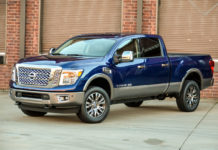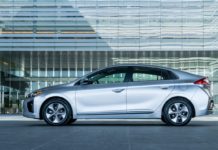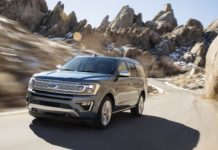So much is riding on the new Chevrolet Malibu that General Motors Corp. will back it up with an ad blitz as big as last year's $300 million launch of the top-selling Silverado pickup.
The pickup launch went down as one of GM's biggest ad campaigns in history, and now the automaker is vowing similar treatment for its redesigned midsize sedan — a segment long neglected by Detroit's Big Three.
The stakes couldn't be higher for GM and the Malibu, which hits showrooms Nov. 1. The sedan is the automaker's most critical launch in years at a time when more fuel-efficient cars are becoming more important to automakers' viability in North America.
But to have any measure of success, GM must begin to reverse a deep-seated perception that the Malibu is a dowdy family hauler destined for rental fleets.
“We're not on their radar screen right now, and we need to be,” Kim Kosak, Chevrolet director of advertising, said of a younger, more affluent demographic. “We've got to make this consumer believe that the Malibu can challenge a (Toyota) Camry or (Honda) Accord.”
GM is prepared to spend truck-size proportions to attract more women, singles and urban dwellers to the sedan.
The Silverado “Our Country” campaign racked up $295 million in ad spending, according to Nielsen Monitor-Plus. Chevy officials on Thursday said the Malibu launch will be as costly.
Some Malibu ads also will play off the Silverado's popularity. Kosak said market studies show many Camry and Accord owners also have a Chevy truck. With that in mind, one ad shows an automotive designer sculpting a clay model of a Silverado into a Malibu.
Ads go on skyscrapers
But that's where the similarities end between car and truck.
Where the Silverado launch relied on Americana-themed TV ads and a John Mellencamp tune, GM is trying to embrace new strategies with the Malibu.
Ads will be plastered on skyscrapers in the nation's biggest metropolises, from Times Square to Hollywood Boulevard. And GM will team up with the nation's largest publisher of women's fashion magazines — Conde Nast, the publisher of Vogue and Glamour — for a tour of upscale malls and a host of interactive activities.
A massive online presence — what GM calls “unprecedented digital domination” — also will be a key element of the campaign. On Wednesday, Malibu ads will be so plentiful on the nation's top home pages that an estimated 80 percent of online users that day will see one. The tone will be edgy and honest, Kosak said, and won't shy from the reality that Toyota and Honda rule the market for midsize cars. One print magazine ad says: “We're tired of being a foreign car in our own country.”
The catchphrase for the campaign is: “The car you can't ignore,” a play on perception of midsize sedans as forgettable.
Fighting for the market
GM has been making a concerted effort to win back some of the midsize market, dominated for years by the Camry and Accord. Toyota spent about $270 million to roll out its new Camry last year, according to Nielsen.
Toyota has sold more than 360,000 Camrys this year and Honda 302,000 Accords, but Malibu sales barely surpassed 90,000 through September.
The carmaker's other midsize offering, the Saturn Aura, has garnered high praise from critics, but struggled to gain much traction in the showroom.
The 2008 Malibu will start at $19,995, more than $2,000 higher than this year's model and about $285 less than the base price of the Toyota Camry.
The Malibu will come with more standard equipment than the old models, Chevy says. A gasoline-electric hybrid version will start at $22,790.
GM's key challenge will be to get on the shopping lists of consumers who long ago wrote off domestic nameplates.
Even Kosak acknowledged that the first converts to the new Malibu will more likely come from other domestic brands or foreign nameplates such as Kia and Nissan, not from Camry and Accord buyers.
Chevy will have to work hard to rise above the noise and become credible, said Alexander Edwards, a marketing expert with Strategic Vision in San Diego.
For one thing, the brand is going up against companies that already have mastered nontraditional media.
Toyota's Scion nameplate, for example, managed to crack the elusive youth culture, while Hyundai is making headway in minority communities.
Both are using one-on-one time with consumers.
“With the media blitz that every person gets each day, it can make such things less effective,” Edwards said.
“But the main purpose of these blanket ads it to generate interest in the product — if people get interested, they may try the vehicle.”









